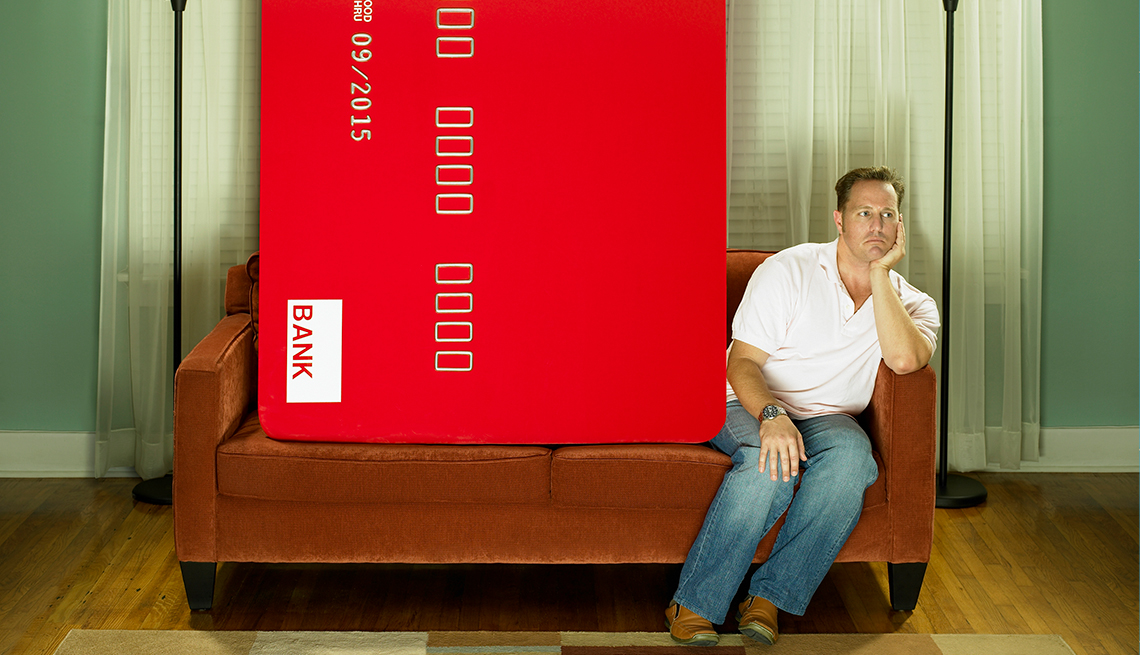
Credit card rates, balances soar
- Select a language for the TTS:
- UK English Female
- UK English Male
- US English Female
- US English Male
- Australian Female
- Australian Male
- Language selected: (auto detect) - EN
Play all audios:

3. THINK TWICE BEFORE SIGNING UP FOR A NEW CARD AT CHECKOUT. It’s not uncommon for store check-out clerks to try to entice you into signing up for a new store credit card that carries a
sky-high rate after the introduction period with the lure of a discount on your purchase, no payments for a certain number of months, or a 0 percent card offer for a set time. While it’s
nice to get 25 percent off on the spot or a no-interest card for 12 months, you should think long and hard before taking the store up on its offer. “These cards come with expensive offers in
order to get the card into people’s hands, and that’s not by accident,” said Howard Dvorkin, a CPA and chairman of Debt.com. “It’s very enticing when you’re standing at the register and the
clerk says, ‘Can I interest you in a credit card you don’t have to make payments on for a year?’ ” The problem is if you don’t pay the balance in full by the end of the honeymoon period,
say a year or 12 months, you could end up paying 30 percent or more on all the past-due interest that has accrued on your balance, warns Dvorkin. “God forbid you’re 30 seconds late when the
payment is due,” said Dvorkin. “All of a sudden you pay your card 366 days later, and you’re going to being paying $1,300 for the $1,000 you charged.” “Avoid using retail credit cards,”
Dvorkin said, “unless you’re 1,000 percent certain that you can pay off the card when the bill comes in. It’s a trap. So don’t fall for the trap. And for people who take advantage of the
offer, make sure you pay it off a month before the [introductory period] ends.” There are times when a store card could make sense, adds Mangaliman. Having a store card for a store you
regularly shop at, such as Target or Costco, that enables you to take advantage of perks like cash-back benefits is OK if you pay your statement off in full each month to avoid interest
charges. 4. LOWER INTEREST COSTS WITH BALANCE TRANSFERS. If you’re carrying a balance on a card with an interest rate of 20 percent or 30 percent and you get a 0 percent balance transfer
offer that lasts six to 12 months, it could net you big savings on interest. “This could save you hundreds or [even] thousands of dollars,” said Mangaliman. But there’s a caveat. You must
come up with a payment schedule that ensures that you pay off the amount of the balance transfer by the end of the introductory period to avoid getting hit with a big interest charge on the
back end of the offer. For example, if you roll over $2,400 to a 0 percent card for 12 months, make payments of $200 per month for 12 months to pay the bill off in full. “Writing down your
zero-balance objective and a specified target date [to pay it off] can be helpful,” said Steven Conners, founder and president of Conners Wealth Management. 5. DON’T THINK HIGH SAVINGS
ACCOUNT RATES WILL BAIL YOU OUT. Sure, earning 5 percent on your cash sitting in a money market account sounds great. But it’s not nearly a sizable enough return to offset the interest
payments on credit cards that charge upwards of 20 percent. “A money market [account] paying in the 4 percent to 5 percent range is meaningless if you have credit card debt,” said Conners.
“If you’re hypothetically paying 19.99 percent in interest and you earn 5.20% in a savings account, you’re still losing the 14.79 percent difference.” Another way to reduce your interest
payments on credit cards is to consider using a personal loan or home equity loan, which charge much lower interest rates, to pay off the cards, says TransUnion’s Wise. “It also is going to
give you a much more certain repayment schedule,” said Wise.
